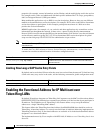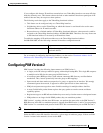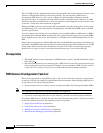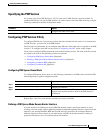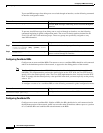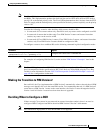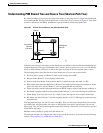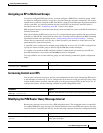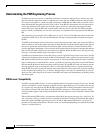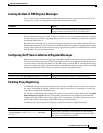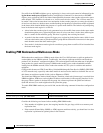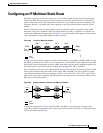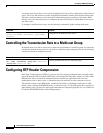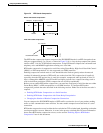
Configuring IP Multicast Routing
Advanced PIM Features Configuration Task List
IPC-424
Cisco IOS IP Configuration Guide
Understanding Reverse Path Forwarding
Reverse Path Forwarding (RPF) is an algorithm used for forwarding multicast datagrams. It functions as
follows:
• If a router receives a datagram on an interface it uses to send unicast packets to the source, the packet
has arrived on the RPF interface.
• If the packet arrives on the RPF interface, a router forwards the packet out the interfaces present in
the outgoing interface list of a multicast routing table entry.
• If the packet does not arrive on the RPF interface, the packet is silently discarded to prevent loops.
PIM uses both source trees and RP-rooted shared trees to forward datagrams; the RPF check is
performed differently for each, as follows:
• If a PIM router has source-tree state (that is, an (S,G) entry is present in the multicast routing table),
the router performs the RPF check against the IP address of the source of the multicast packet.
• If a PIM router has shared-tree state (and no explicit source-tree state), it performs the RPF check
on the RP address of the RP (which is known when members join the group).
PIM sparse mode uses the RPF lookup function to determine where it needs to send join and prune
messages. (S, G) join message (which are source-tree states) are sent toward the source. (*, G) join
messages (which are shared-tree states) are sent toward the RP.
DVMRP and PIM dense mode use only source trees and use RPF as described previously.
Delaying the Use of PIM Shortest-Path Tree
The switch from shared to source tree happens upon the arrival of the first data packet at the last hop
router (Router C in Figure 67). This switch occurs because the ip pim spt-threshold interface
configuration command controls that timing, and its default setting is 0 kbps.
The shortest-path tree requires more memory than the shared tree, but reduces delay. You might want to
postpone its use. Instead of allowing the leaf router to move to the shortest-path tree immediately, you
can specify that the traffic must first reach a threshold.
You can configure when a PIM leaf router should join the shortest-path tree for a specified group. If a
source sends at a rate greater than or equal to the specified kbps rate, the router triggers a PIM join
message toward the source to construct a source tree (shortest-path tree). If the infinity keyword is
specified, all sources for the specified group use the shared tree, never switching to the source tree.
The group list is a standard access list that controls which groups the shortest-path tree threshold applies
to. If a value of 0 is specified or the group list is not used, the threshold applies to all groups.
To configure a traffic rate threshold that must be reached before multicast routing is switched from the
source tree to the shortest-path tree, use the following command in global configuration mode:
Command Purpose
Router(config)# ip pim spt-threshold {kbps |
infinity} [group-list access-list]
Specifies the threshold that must be reached before moving to
shortest-path tree.



